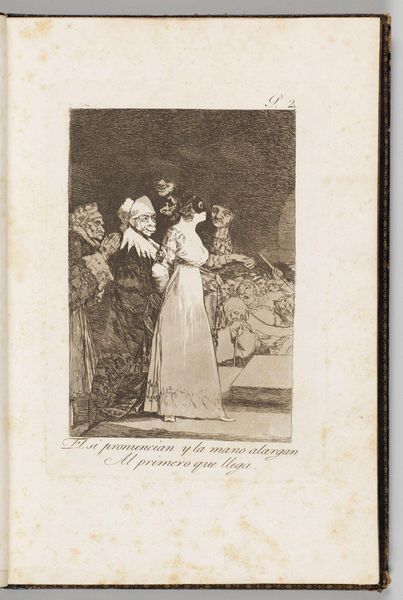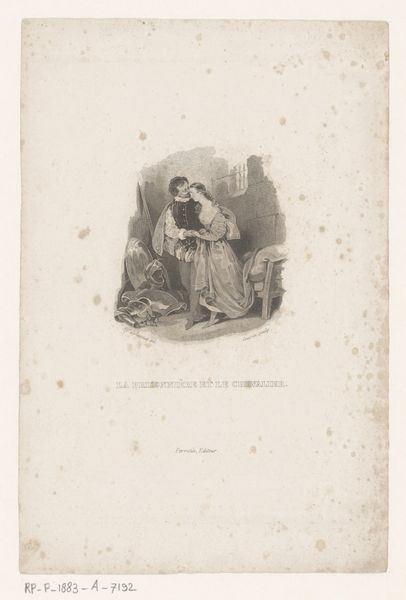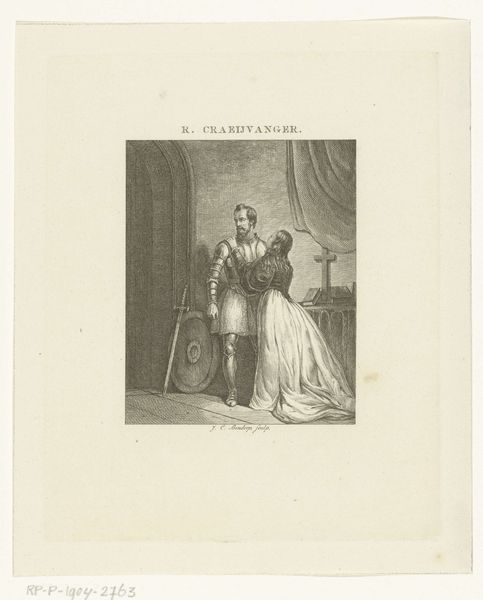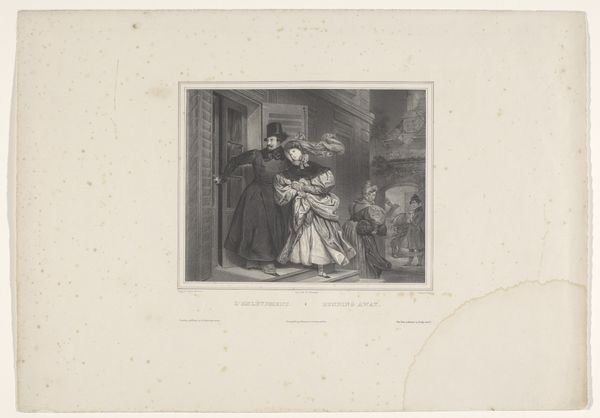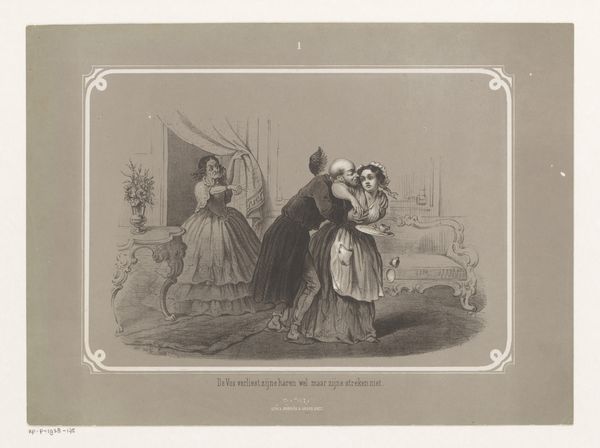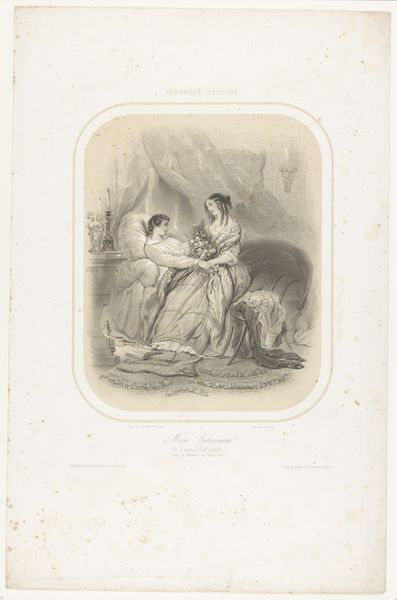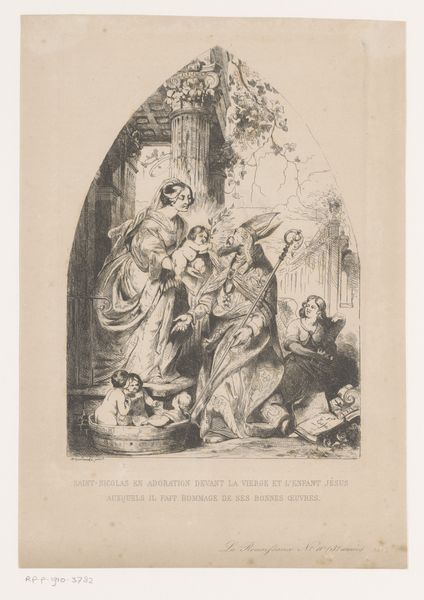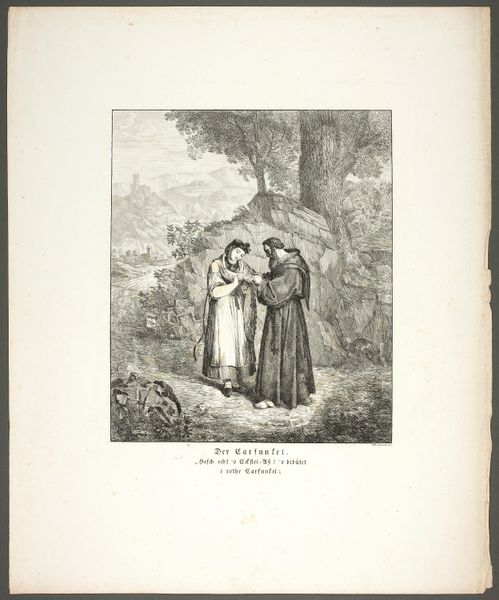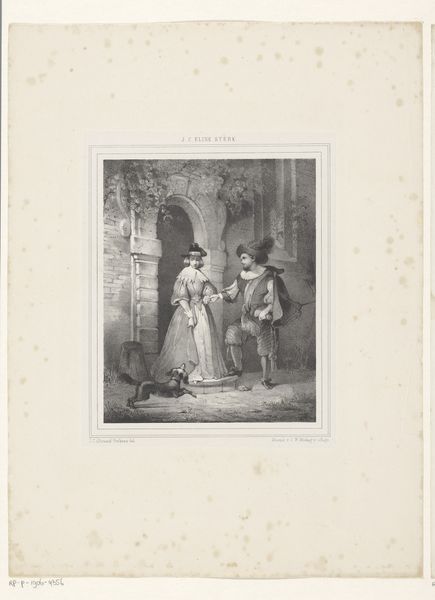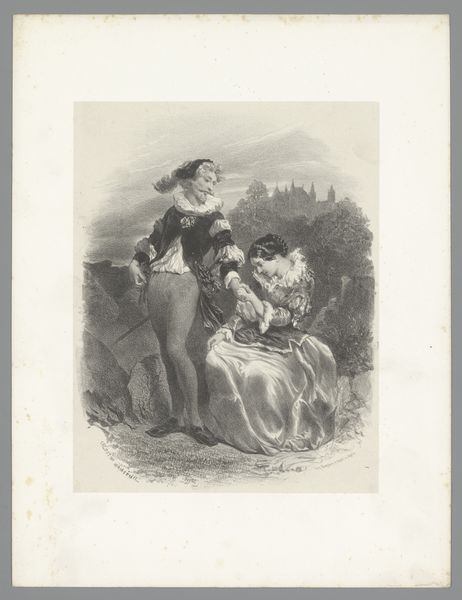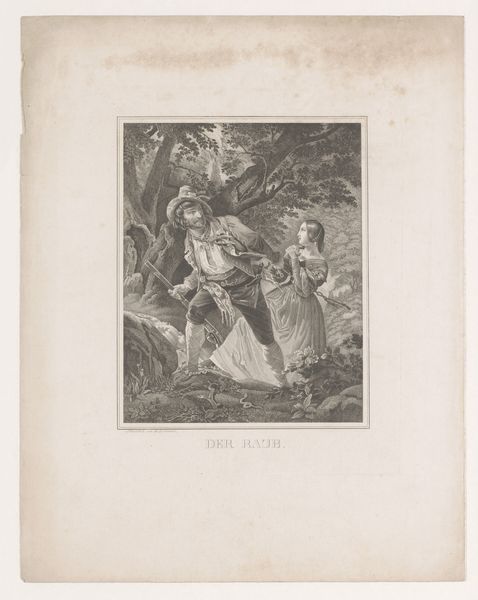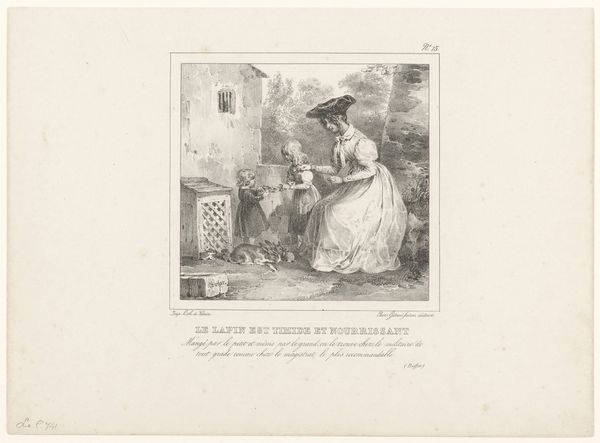
Jongeman leidt jonge vrouw bij avond langs een graftombe before 1833
0:00
0:00
drawing, lithograph, print, paper
#
drawing
#
narrative-art
#
lithograph
# print
#
landscape
#
figuration
#
paper
#
romanticism
Dimensions: height 271 mm, width 206 mm
Copyright: Rijks Museum: Open Domain
Charles Abraham Chasselat made this lithograph, "Jongeman leidt jonge vrouw bij avond langs een graftombe," which translates to "Young man leads a young woman in the evening along a tomb", sometime before his death in 1843. Lithography, the printmaking technique used here, was still quite new then. It involves drawing on a flat stone with a greasy crayon, then treating the stone so that ink adheres only to the drawn areas. This print’s shadowy atmosphere results from the fine control of tone that lithography offers, building up nuanced textures. It’s interesting to think about lithography in its historical context. The technique emerged alongside the rise of mass media, offering a relatively inexpensive way to reproduce images, not unlike today’s digital printing. While Chasselat used the process to create a unique artwork, he was also participating in a broader shift towards visual communication that continues to shape our world. It invites us to reconsider what we mean by artistic skill and creativity, which are always bound up with the means of production.
Comments
No comments
Be the first to comment and join the conversation on the ultimate creative platform.
